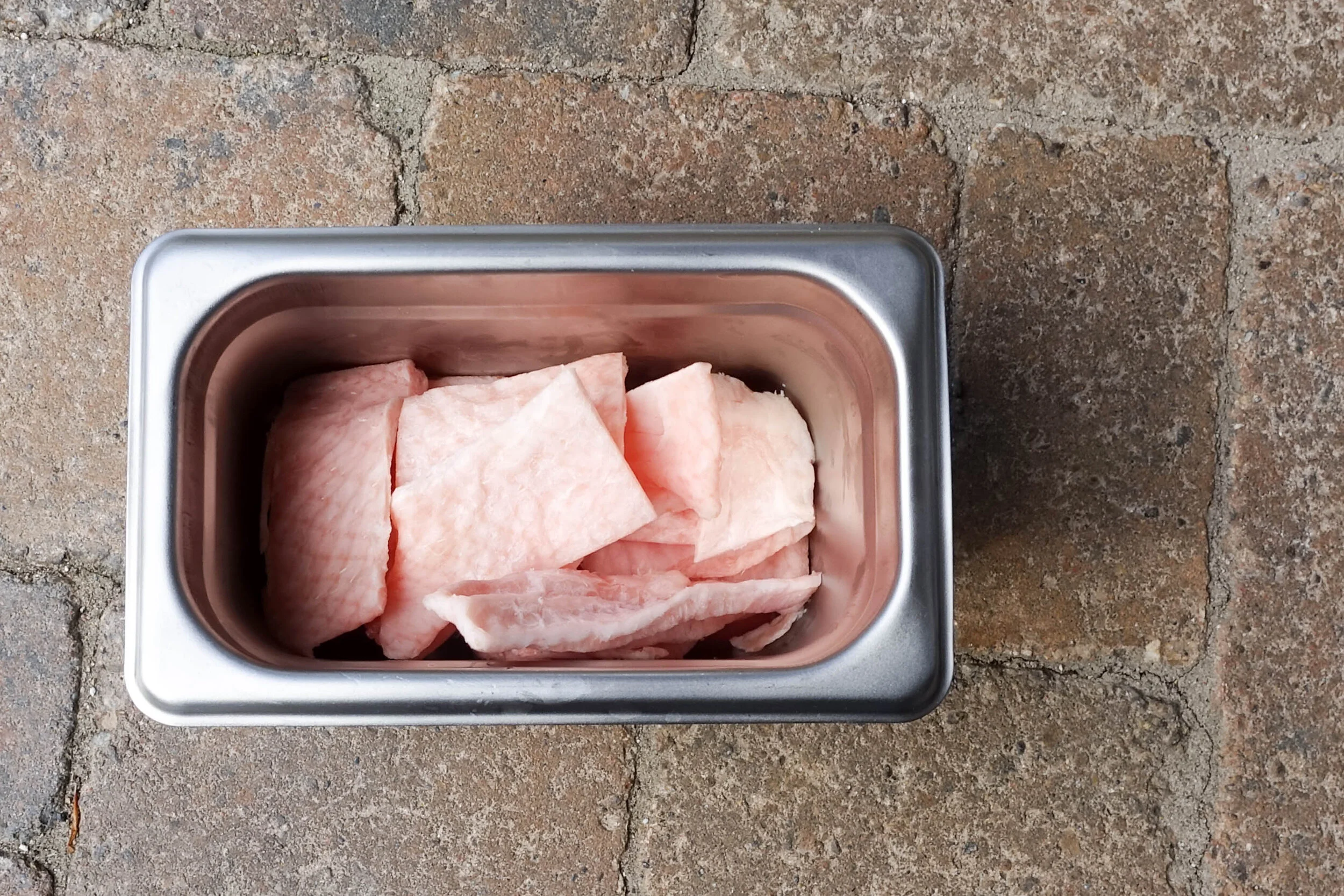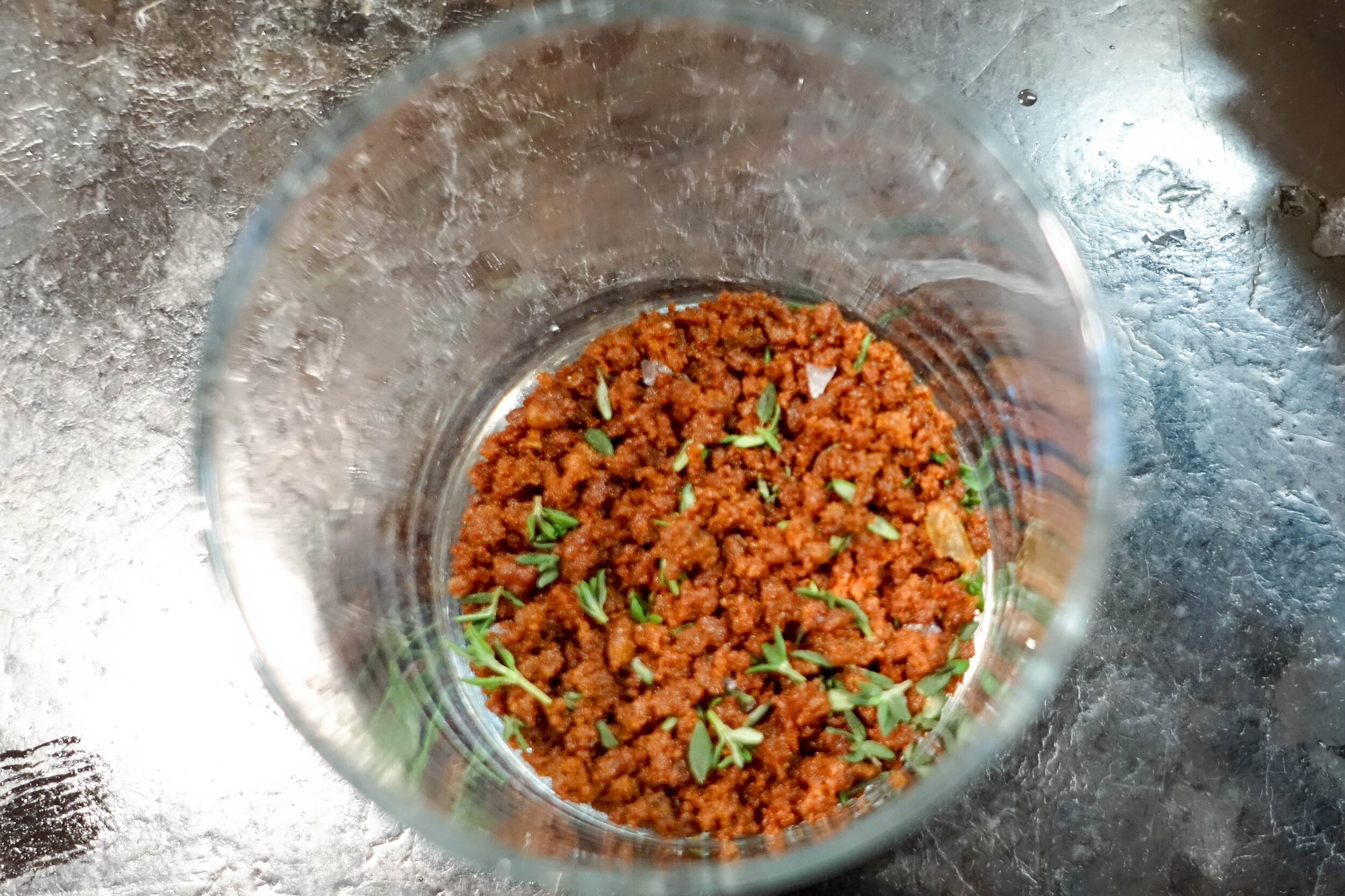Liquid Nitrogen: Part 2
In Liquid Nitrogen: Part 1, Liquid Nitrogen (LN2) was described as the liquid form of Nitrogen which while normally a gas, in its liquid state is extremely cold, −195.79°C. This property allows for some very interesting uses in modernist cuisine such as Cryofrying, a technique used to great effect by Nathan Myhrvold and his team at Modernist Cuisine to create Cryoburgers. Another application is Cryo-grinding described by the team at ChefSteps.
As they note, sous vide is an excellent technique for cooking tender juicy meat, but because it utilizes low temperature, it doesn’t produce the Maillard reaction or crispy skin when used for poultry or fish. Traditional sous vide technique has one remove the skin altogether or sear the protein after cooking. An innovative approach to creating crispy skin the team at ChefSteps advances is Cryo-grinding which they used for duck breast.
With this technique, they freeze the skin solid in a bath of liquid nitrogen leaving it extremely brittle. You may have seen this effect at your local science museum when the normally soft petals of a flower are dipped into LN2 and then smashed into hundreds of pieces.
Demonstration of smashing a flower dipped in LN2 (Video by Karen Chan, Demolab Supervisor, Univeristiy of California, Berkeley, Department of Chemistry, Chemistry Demonstrations Lab)
Instead of smashing the frozen skin, they pulverize it in a blender creating a powder which they then cook down in a saucepan. This results in a fine crumble of browned, flavourful, crispy skin which can be used as a garnish.
Here I have a whole duck breast and a breast with its skin removed to the side
Skinless breasts with some EVOO and thyme ready to be cooked sous vide.
The duck skin has been cut into pieces ready to be cryogenically frozen.
LN2 added to the skin freezing them solid.
Made brittle from cryogenically freezing in LN2, the skin was then pulverized in a blender.
N.B.; Because of the high sheer forces created by the spinning blades of the blender, the duck skin will warm. As partially thawed skin is soft , not brittle, it won’t pulverize well. This can be counteracted by adding more LN2 to the blender jar as necessary keep the skin from thawing.
Here the skin is rendered in its own fat and made crispy.
The finished product; crispy duck skin crumble to which a little thyme has been added.
Sliced duck breast garnished with duck skin crumble served with fiddleheads and scalloped potatoes.
In the coming weeks, I hope to explore other culinary uses for LN2, so be sure to check back!







